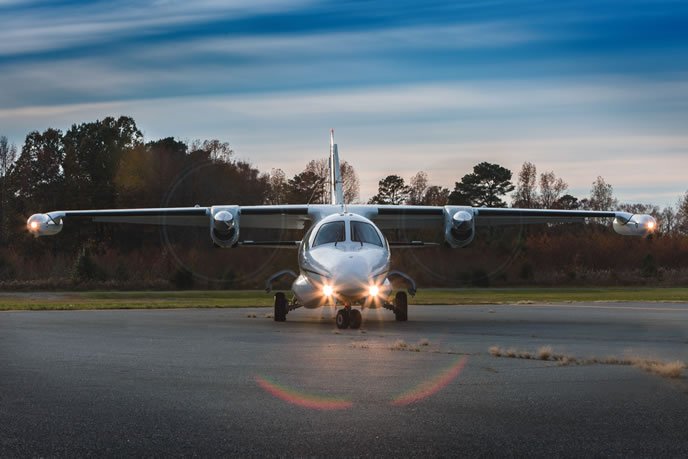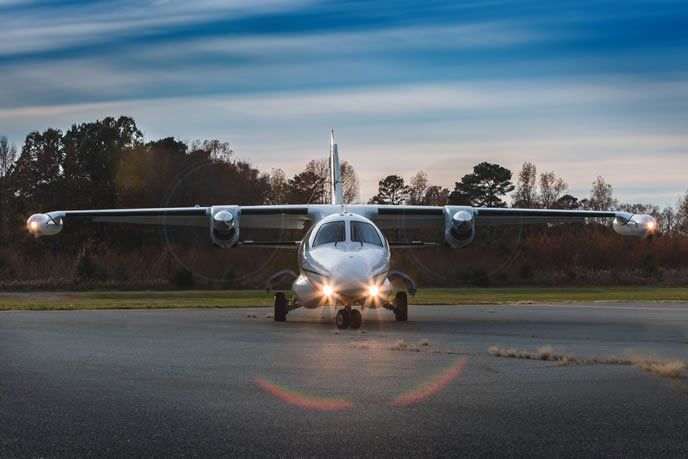On September 30, 2005, then-Director of FAA’s Flight Standards Service, Jim Ballough, noted in a letter to the type’s owners/operators, and to maintenance technicians, “the MU-2 series airplane has been involved in 11 accidents over the past 18 months, with a total of 12 fatalities.” The letter announced the agency “urgently” was undertaking an “in-depth” safety evaluation and added, “performance expectations and control techniques common in other turboprop twins do not necessarily transfer to flying the MU-2.” Ballough’s letter acknowledged the widespread perception that the airplane had a problem, thanks to its wing design and use of spoilers for roll control, which had been building for years.
Tony Fletcher
The events leading up to Ballough’s letter are complicated—and involve a vocal U.S. Congressman who specifically requested that the MU-2 fleet be grounded. All of which created a problem for MU-2 owners and operators, the manufacturers and the FAA. The perception of the MU-2 as a “widow maker” grew mostly out of a dismal 20 years of the aircraft’s nearly 50-year history. Only seven of the 20 years ended with fatalities in single digits. The tally: 119 accidents with 257 fatalities. But a 2008 special federal aviation regulation (SFAR 108) requiring special training to fly or instruct in the type turned all that around: Eight accidents have occurred since the rule went into effect—only two were fatal. What did SFAR 108 require? And what lessons can be applied to other types?
The Record
Proponents and owners of MU-2s credit SFAR 108 for the type’s excellent safety record over the seven years since its issuance. The change has been dramatic: Between December 1968 and March 2014 188, MU-2 accidents around the world produced total 347 fatalities, according to the Flight Safety Foundation’s Aviation Safety Network (ASN) records. Of those 188 accidents, almost two-thirds—115—resulted in fatalities.
The roots of the MU-2’s reputation are apparent in the numbers for 1975 through 1994. Global numbers in ASN’s database show those years brought 119 accidents, 63 percent of the total, and 257 fatalities, 74 percent. While the type’s record improved after 1996, accident statistics showed their most-dramatic reduction since SFAR 108’s effective date in February 2009. The ASN’s records show six U.S. accidents, including two resulting in five fatalities, out of eight total accidents worldwide. The two U.S. accidents were the only fatals. Five of the eight total accidents left the aircraft reparable; three were write-offs.
The FAA mandated model-specific initial and annual recurrent training in the aircraft by all pilots who wish to command an MU-2. The rule also requires use of a functional autopilot for nearly all single-pilot operations. But beyond simply mandating training, standardizing that training to match the airplane is what underpins the results, according to the plane’s supporters and the product-support chief for Mitsubishi Heavy Industries America (MHIA), Pat Cannon. Said Cannon, “MHIA is very pleased with the results of SFAR 108.”
From the ramp
The MU-2 suffered from the accident-inspired perception it was difficult to fly, that pilots needed to “be super pilots” to handle it. Instead, tailored training turned the corner on MU-2 accidents, as it has for the R-22 and R-44 Robinson helicopters (see the sidebar at right). When the FAA published its proposal for SFAR 108, MU-2 community support was overwhelming, Cannon noted. Out of a population numbering fewer than 250 U.S.-registered MU-2s, the agency received 178 responses. The dominant position: The airplane was safe, but the lack of standardization or a regular recurrent-training requirement—something beyond a flight review but not a type rating—was needed.
“We needed more-standardized, specific training and the FAA worked with us to give us what the community needed,” explained Cannon, himself a high-time MU-2 pilot who logged several thousand hours in the aircraft when he flew for its U.S. distributor. He also flew MU-2 aircraft for the safety evaluation. “The FAA continues to work with us to improve the training, as we speak,” he added, From all appearances, the desired results came about. It worked, say MU-2 fans. “The numbers show it. But more can be done,” said Cannon.
What the rule does is reinforce, by regulatory fiat, what a number of MU-2 pilots and the MHAI told Aviation Safety: “This plane must be flown by the book,” in Cannon’s words. “The MU-2 doesn’t require super-pilot skills to fly,” he added. But, he noted, it does not happily tolerate deviations from what works. As with type-specific training for other aircraft, the curriculum exposes the pilots to mistakes to avoid—mistakes so unforgiving that MU-2 pilots train for them only in approved, advanced flight training devices.
SFAR 108 Specifics
So what makes all this work? According to Cannon and some of the aircraft’s owners, what makes FAR 108 work is how it defines and standardizes training. In other words, SFAR 108 works by creating “the book”—training and performance specifics for all the various MU-2 sub-types—by which it’s to be flown.
As usual, time-in-type is key. What the SFAR’s training provides, more than anything stressed Cannon, is the consistent use of proper techniques, which can be specific to the multiple MU-2 variants flying. “It helps fulfill the need for developing procedures for handling things,” Cannon explained, “and to develop some muscle memory. As you exercise that training periodically, you help raise the performance standards of the pilots.”
Aside from the legal requirement, the community seems to self-police its population. About 400 people attended the most-recent biennial operators convention, and 60 percent of the fleet showed, Cannon told us. Cannon’s organization, MHIA, sponsors the event, known as the Pilots Review Of Proficiency, or PROP.
“It’s not considered to be training or part of the SFAR, and they’re not mandatory,” Cannon said. “It’s like a safety stand-down. They’re an opportunity to get pilots together to share what they know.”
The next major PROP event is in 2016, but there are regional events annually. This year, they’re set for Dallas, in the Central/Southeast U.S., and in the northern Midwest. The most popular are those held at SimCom in Orlando, Fla. “Their simulators provide a more realistic response,” Cannon explained.
“The package you can get in terms of practice maneuvers and procedures is important. In the real airplane, you can only do so much. Split flap; trim runaway; system failures that can get you turned around you can’t do in the airplane. But you can expose pilots to those problems in the simulator. Safely.”
Lessons
The MU-2’s design and configuration might make it a special case, but the fact is that type-specific training—and lots of it—reversed trends in the airplane’s accident and fatality history: It’s now one of the safest twin turboprops in the world. It’s also a reminder that, while the flivver you fly may not be as unforgiving as an MU-2, no two airplane types are the same. Obtain regular training in their foibles and peculiarities. Use a type-specific simulator, when available, to practice emergencies too dangerous to perform in the real airplane. Be aware of equipment or configuration changes possibly making your aircraft handle differently from others of its type. Lastly, obtain your training from instructors who know the type and regularly fly it.




